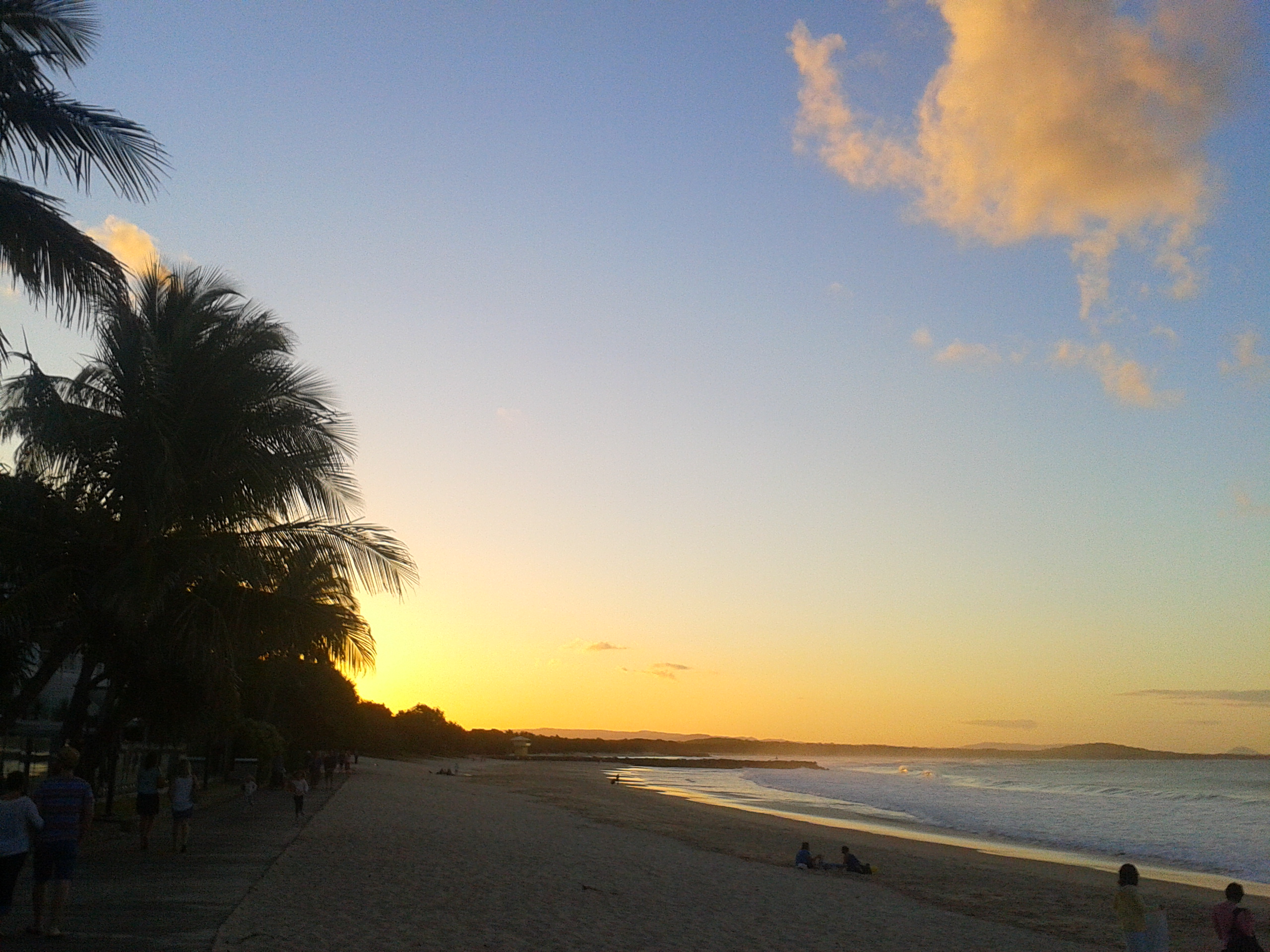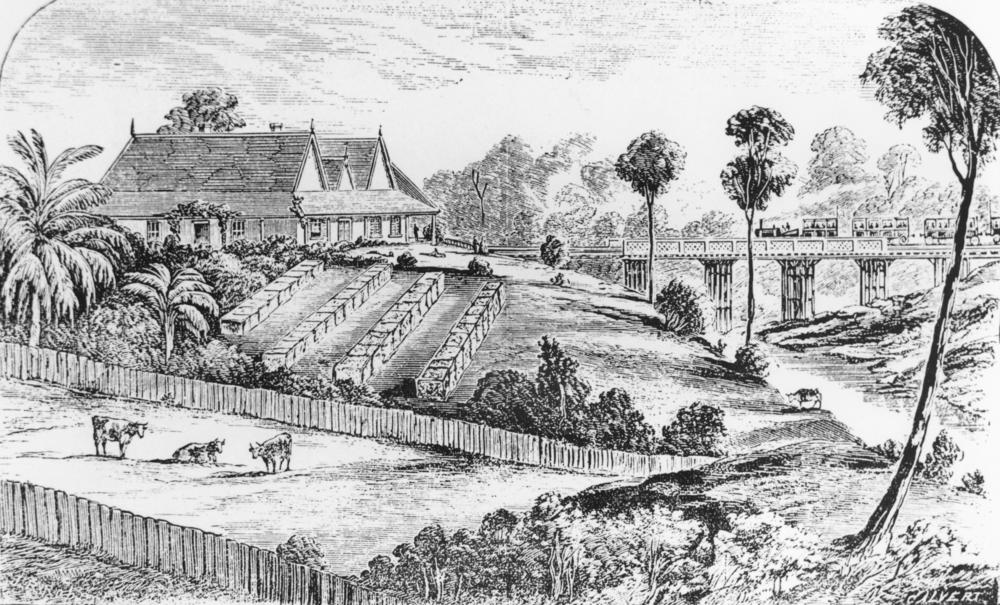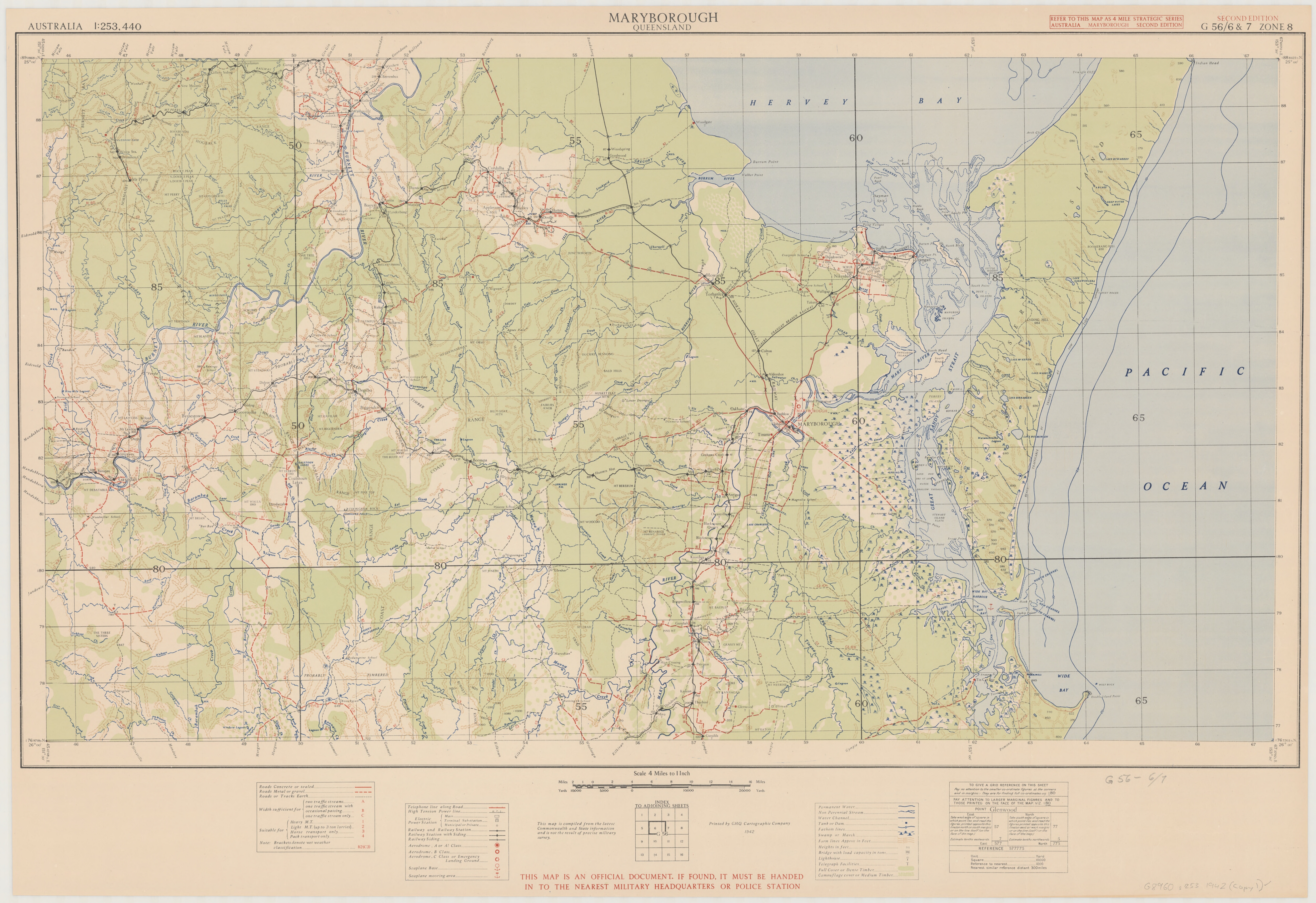|
Mount Pinbarren National Park
Mount Pinbarren is a national park in Queensland, Australia, 129 km north of Brisbane. It is located in Pinbarren, a locality in the Shire of Noosa. Mount Pinbarren lies within the South East Queensland bioregion and the Mary River catchment area. The park protects the naturally vegetated slopes of Mount Pinbarren. It was established to preserve significant hoop pine complex microphyll vine forest and habitat for the endangered Coxen’s fig parrot. Access to the park is limited as it is surrounded by private property. See also *Noosa Biosphere Reserve * Protected areas of Queensland Queensland is the second largest state in Australia. It contains around 500 separate protected areas. In 2020, it was estimated a total of 14.2 million hectares or 8.25% of Queensland's landmass was protected. List of terrestrial protected ar ... References National parks of Queensland Protected areas established in 1929 Pinbarren 1929 establishments in Australia ... [...More Info...] [...Related Items...] OR: [Wikipedia] [Google] [Baidu] |
Queensland Parks And Wildlife Service
The Queensland Parks and Wildlife Service (QPWS) is a business division of the Department of Environment and Science within the Government of Queensland. The division’s primary concern is with the management and maintenance of protected areas within Queensland, to protect and manage Queensland’s parks, forests and the Great Barrier Reef for current and future generations. The QPWS managed areas include more than 1000 national parks, state forests, marine parks and other protected areas, and five world heritage areas. Of these, 220 are national parks. Queensland’s first national park, Witches Falls (in today’s Tamborine National Park), was established on 28 March 1908, followed by Bunya Mountains National Park in July 1908, and then Lamington National Park in 1915. From modest early beginnings within the Forestry department, a dedicated national parks service was established in 1975—the Queensland Parks and Wildlife Service. From that time, park rangers have proudly ... [...More Info...] [...Related Items...] OR: [Wikipedia] [Google] [Baidu] |
Queensland
) , nickname = Sunshine State , image_map = Queensland in Australia.svg , map_caption = Location of Queensland in Australia , subdivision_type = Country , subdivision_name = Australia , established_title = Before federation , established_date = Colony of Queensland , established_title2 = Separation from New South Wales , established_date2 = 6 June 1859 , established_title3 = Federation , established_date3 = 1 January 1901 , named_for = Queen Victoria , demonym = , capital = Brisbane , largest_city = capital , coordinates = , admin_center_type = Administration , admin_center = 77 local government areas , leader_title1 = Monarch , leader_name1 = Charles III , leader_title2 = Governor , leader_name2 = Jeannette Young , leader_title3 = Premier , leader_name3 = Annastacia Palaszczuk ( ALP) , legislature = Parliament of Queensland , judiciary = Supreme Court of Queensland , national_representation = Parliament of Australia , national_representation_type ... [...More Info...] [...Related Items...] OR: [Wikipedia] [Google] [Baidu] |
Brisbane
Brisbane ( ) is the capital and most populous city of the states and territories of Australia, Australian state of Queensland, and the list of cities in Australia by population, third-most populous city in Australia and Oceania, with a population of approximately 2.6 million. Brisbane lies at the centre of the South East Queensland metropolitan region, which encompasses a population of around 3.8 million. The Brisbane central business district is situated within a peninsula of the Brisbane River about from its mouth at Moreton Bay, a bay of the Coral Sea. Brisbane is located in the hilly floodplain of the Brisbane River Valley between Moreton Bay and the Taylor Range, Taylor and D'Aguilar Range, D'Aguilar mountain ranges. It sprawls across several local government in Australia, local government areas, most centrally the City of Brisbane, Australia's most populous local government area. The demonym of Brisbane is ''Brisbanite''. The Traditional Owners of the Brisbane a ... [...More Info...] [...Related Items...] OR: [Wikipedia] [Google] [Baidu] |
Pinbarren, Queensland
Pinbarren is a rural town and locality in the Shire of Noosa, Queensland, Australia. In the , the locality of Pinbarren had a population of 447 people. Geography Pinbarren is on the Sunshine Coast, from the centre of Noosa Heads. It is located at the foot of Mount Pinbarren. Its southern boundary is marked by Six Mile Creek. The town is in the south-west of the locality. Mount Pinbarren is located in Mount Pinbarren National Park, which was established in 1929. History The name ''Pinbarren'' appears to be a corruption of an Aboriginal name ''Pimperon'' for the local mountain. Pinbarren Creek Provisional School opened in 1905. On 1 January 1909, it became Pinbarren Creek State School. The school was closed in 1939. From 1939 to 1943 the Pomona School Forestry Club planted Hoop Pine, Kauri Pine, Flooded Gum and Silky Oak trees on the school site and it was named the Pomona Memorial Forestry Plot on 31 October 1944. A white cross and memorial plaque are present alongside the Po ... [...More Info...] [...Related Items...] OR: [Wikipedia] [Google] [Baidu] |
Shire Of Noosa
The Shire of Noosa is a local government area about north of Brisbane in the Sunshine Coast district of South East Queensland, Australia. The shire covers an area of . It existed as a local government entity from 1910 until 2008, when it was amalgamated with the Shire of Maroochy and City of Caloundra to form the Sunshine Coast Region. The shire was re-established on 1 January 2014. History Geological history The Noosa Hinterland was formed during the Oligocene era around 25-30 million years ago when volcanic activity created the ranges. By the beginning of the Neolithic era, Noosa's coast experienced a change in sea level rises when its beaches and waterways began to take shape. Ancient history The Noosa area was originally home to several Aboriginal groups. They primarily include the '' Undumbi'' tribe to the south, the '' Dulingbara'' to the north, and the ''Kabi Kabi'' (or ''Gabbi Gabbi'') to the west. ''Gubbi Gubbi (Kabi Kabi, Cabbee, Carbi, Gabi Gabi)'' is an ... [...More Info...] [...Related Items...] OR: [Wikipedia] [Google] [Baidu] |
South East Queensland
South East Queensland (SEQ) is a bio-geographical, metropolitan, political and administrative region of the state of Queensland in Australia, with a population of approximately 3.8 million people out of the state's population of 5.1 million. The area covered by South East Queensland varies, depending on the definition of the region, though it tends to include Queensland's three largest cities: the capital city Brisbane; the Gold Coast; and the Sunshine Coast. Its most common use is for political purposes, and covers and incorporates 11 local government areas, extending from Noosa in the north to the Gold Coast and New South Wales border in the south (some sources include Tweed Heads, New South Wales which is contiguous as an urban area with Brisbane/Gold Coast), and west to Toowoomba (which is simultaneously considered part of the Darling Downs region). South East Queensland was the first part of Queensland to be settled and explored by Europeans. Settlements initially aro ... [...More Info...] [...Related Items...] OR: [Wikipedia] [Google] [Baidu] |
Mary River (Queensland)
The Mary River (Kabi Kabi: ''Moocooboola'') is a major river system located in the South East and Wide Bay–Burnett regions of Queensland, Australia. Etymology The river was traditionally named ''Moocooboola'' by the indigenous Australian Kabi people. The river was named ''Wide Bay River'' on 10 May 1842 by early European explorers, Andrew Petrie and Henry Stuart Russell. The official name was changed on 8 September 1847 (prior to Queensland becoming a separate colony) by Charles Augustus FitzRoy, then Governor of New South Wales, to ''Mary River'' — after his wife Lady Mary Lennox (15 August 1790 to 7 December 1847). History The Mary River was used for rafting timber during the early years of European land settlement, and the discovery of gold at Gympie in 1867 brought an inflow of miners and pastoralists. Alluvial flats along the Mary River and some of its tributaries were used for cropping, and there was small-time dairying in the 1880s. Course and features The ... [...More Info...] [...Related Items...] OR: [Wikipedia] [Google] [Baidu] |
Araucaria Cunninghamii
''Araucaria cunninghamii'' is a species of ''Araucaria'' known as hoop pine. Other less commonly used names include colonial pine, Queensland pine, Dorrigo pine, Moreton Bay pine and Richmond River pine. The scientific name honours the botanist and explorer Allan Cunningham, who collected the first specimens in the 1820s. Habitat The species is found in the dry rainforests of New South Wales and Queensland and in New Guinea. The trees can live up to 450 years and grow to a height of 60 metres. The bark is rough, splits naturally, and peels easily. Description The leaves on young trees are awl-shaped, 1–2 cm long, about 2 mm thick at the base, and scale-like, incurved, 1–2 cm long and 4 mm broad on mature trees. The cones are ovoid, 8–10 cm long and 6–8 cm diameter, and take about 18 months to mature. They disintegrate at maturity to release the nut-like edible seeds. Subspecies There are two varieties: *''Araucaria cunninghamii'' var. ''cu ... [...More Info...] [...Related Items...] OR: [Wikipedia] [Google] [Baidu] |
Microphyll
In plant anatomy and evolution a microphyll (or lycophyll) is a type of plant leaf with one single, unbranched leaf vein. Plants with microphyll leaves occur early in the fossil record, and few such plants exist today. In the classical concept of a microphyll, the leaf vein emerges from the protostele without leaving a leaf gap. Leaf gaps are small areas above the node of some leaves where there is no vascular tissue, as it has all been diverted to the leaf. Megaphylls, in contrast, have multiple veins within the leaf and leaf gaps above them in the stem. Leaf vasculature The clubmosses and horsetails have microphylls, as in all extant species there is only a single vascular trace in each leaf. These leaves are narrow because the width of the blade is limited by the distance water can efficiently diffuse cell-to-cell from the central vascular strand to the margin of the leaf. Despite their name, microphylls are not always small: those of ''Isoëtes'' can reach 25 centimetres ... [...More Info...] [...Related Items...] OR: [Wikipedia] [Google] [Baidu] |
Coxen’s Fig Parrot
Coxen's fig parrot (''Cyclopsitta diophthalma coxeni''), also known as the blue-browed, red-faced or southern fig parrot or lorilet, is one of the smallest and least known Australian parrots. It is a highly endangered subspecies of the double-eyed fig parrot. It was named by John Gould after his brother-in-law Charles Coxen. Description Coxen's fig parrot is about 15–16 cm long, larger than the other subspecies of double-eyed fig parrot. Its very short tail gives it a top-heavy, big-headed appearance. It is predominantly bright yellowish-green in colour with a blue forehead surrounded by a few scattered red feathers, and with orange-red cheeks bordered below by a variable mauve-blue band. The female is similar in appearance to the male, though slightly duller in colouration. Its flight is rapid and direct, generally above the forest canopy. It can be distinguished from little and musk lorikeets by its dumpier build, more rounded wings and seemingly tail-less silhouett ... [...More Info...] [...Related Items...] OR: [Wikipedia] [Google] [Baidu] |
Noosa Biosphere Reserve
Noosa Biosphere Reserve is an internationally protected area covering the region of Noosa in Queensland, Australia. It is formally recognised as a Biosphere Reserve by the United Nations Education, Scientific and Cultural Organization (UNESCO) and Man and the Biosphere (MAB) program for its highly diverse ecosystem over a relatively small space. It was the first Biosphere Reserve for the state of Queensland, established in September 2007. The reserve is bound by the Noosa Shire Council boundaries, extending offshore by , covering in total. It is governed by Noosa Biosphere Limited (NBL), a not-for-profit company, which mainly consists of members from the local community who fulfil roles in the governance board, sector boards, and partnerships. Community plays a significant role in the implementation of the Biosphere Reserve guidelines. History The Noosa Biosphere Reserve was established as a protected area by UNESCO in 2007. A designation for the biosphere reserve was reinsta ... [...More Info...] [...Related Items...] OR: [Wikipedia] [Google] [Baidu] |
Protected Areas Of Queensland
Queensland is the second largest state in Australia. It contains around 500 separate protected areas. In 2020, it was estimated a total of 14.2 million hectares or 8.25% of Queensland's landmass was protected. List of terrestrial protected areas Conservation Parks * Anderson Street * Archer Point * Baddow Island * Baffle Creek * Bakers Creek * Baldwin Swamp * Bare Hill * Barubbra Island * Baywulla Creek * Beachmere * Beelbi Creek * Bell Creek * Bingera 1 * Bingera 2 * Bird Island * Blackwater * Bloomfield River * Bloomsbury * Boat Mountain 1 * Boat Mountain 2 * Bottle Creek * Boyne Island * Broadwater * Buccan * Buckleys Hole * Bullock Creek * Bullyard * Bunya Mountains * Bunyaville * Burleigh Knoll * Byron Creek * Cabbage Tree Point * Caloundra * Cape Pallarenda * Carbrook Wetlands * Carello Palm Swamp * Carraba * Causeway Lake * Charon Point * Combo 1 * Combo 2 * Coolmunda * Cooloothin * Coombabah Lake * Cressbrook * Currimundi Lake * Curr ... [...More Info...] [...Related Items...] OR: [Wikipedia] [Google] [Baidu] |




